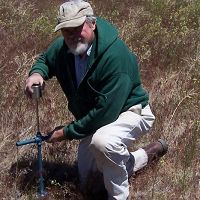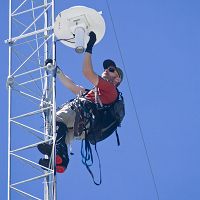Johnson et al., 2011
Nutrient Hotspots in a Sierra Nevada Soil: Spatial Patterns on a Plot and a Watershed Scale.
Johnson, D., Hunsaker, C.T., Meadows, M.W. (2011)
Fall meeting, American Geophysical Union, December 2011. Abstract B33G-0551.
-
Sierra, INVESTIGATOR
-
Sierra, INVESTIGATOR
-
Sierra, STAFF
Abstract
In a previous presentation, we reported on nutrient hotspots (defined here as statistical outliers) in soils within 6 x 6 m plots within the Kings River Experimental Watershed, the Southern Sierra Critical Zone Observatory. We expected that hotspots would be more prevalent for less abundant than for more abundant nutrients, but this was not the case: hotspots occurred for all nutrients measured both by soil extractions and resin methods. In this paper, we compare the results of that small scale analysis with spatial patterns of nutrients on a watershed scale. Two types of samples of O horizons and mineral soil were taken at each of 87 random points on a uniform grid within the KREW watersheds: one from a soil pit, and three soil cores taken at the same depth within 8 m of the soil pit. The latter samples (hereafter referred to as satellite samples) were bulked by point. Correlations between pit and satellite data on a point basis were very poor but improved considerably when values were averaged by watershed. Hotspots occurred for all measured nutrients in the watershed-scale measurements, and were more common in pit than in satellite samples. In addition to O horizon and soil samples, resin lysimeters were placed at two locations within 4 m of each other at each point and used to monitor annual NH4+ and NO3- fluxes for several years. Resin lysimeter flux data also showed a considerable number of hotspots. Flux values for the two replicate lysimeters within each grid point were not correlated, thus suggesting that the hotspots were not related to the points but to small spatial differences. Collectively, the data taken on the watershed level suggests that the pattern of nutrient hotspots and scale of variability represented in the small 6 x 6 m plots is representative of the larger watershed-level scale.
Citation
Johnson, D., Hunsaker, C.T., Meadows, M.W. (2011): Nutrient Hotspots in a Sierra Nevada Soil: Spatial Patterns on a Plot and a Watershed Scale. Fall meeting, American Geophysical Union, December 2011. Abstract B33G-0551. .
Explore Further



